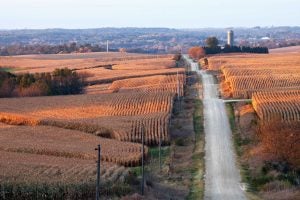Whether planting season or harvest time, the national conversation abounds with questions people want to ask farmers. The financial world is awash with confusing numbers and all things ag are in the mix. Between inflation and input costs there are a number of misconceptions about farming as a business, and of course the labor force is always a related concern. The fact is, whereas once upon a time the overwhelming majority of Americans lived on or around farms, today just a few per hundred of people do. And yet rural America is alive and well, and as these farm facts show, the ag economy and the culture it produces are more than significant.
The disconnect between rural, suburban, and urban America seems to be greater today than in recent years. And while the mainstream conversation might be focused on informing rural America about other communities within this country, there’s no question misunderstandings abound about the farm zone.
Below are some points to consider about agricultural producers, farmers, and rural America.
1. Do American Farmers Feed the World?
According to the American Farm Bureau, one average U.S. farm feeds 166 people annually both at home and abroad, and 86 percent of this country’s agricultural products are produced on family farms and ranches.

With census reports showing the U.S. population at a record high of over 331 million, and the Earth at 7.9 billion, American producers are being tasked like never before. Consider that in the year 1800, the world population was only 1 billion. Growing forward, the productivity of ag producers will be contingent on improved, and costlier, technology.
2. Are Farmers Rich?
That all depends on how one defines rich. The U.S. Department of Agriculture’s Economic Research Service reports that in 2020, the average U.S. farm household had $1,714,559 in wealth, and households operating commercial farms had $2.8 million in total wealth at the median. This seems considerably higher than the median wealth of $123,358 for all U.S. households.

But that comparison isn’t apples to apples, as the old saying goes. The farm is a business. And so for a family farm household, that’s a global value of assets less debts, including their home, land holdings, equipment, trucks, and inventories. To that extent, it’s not a question of whether a farmer is wealthy or not, it’s a question of how valuable their business is relative to their liabilities.
The ERS reports that when compared to other self-employed households, in 2020 the median income of farm business households was $62,402 against their peers’ $89,492, meaning family farms as self-employed households underperformed relative to their peers in some ways.
3. Are Farmers in Debt?
Yes. There’s no doubt American farmers manage debt for a living. And agricultural debt continues to increase. According to the USDA, farm real estate debt was expected to hit $301.7 billion in 2021, a 4.5 percent increase in nominal terms and 0.7 percent in inflation-adjusted dollars. Farm real estate debt as a share of total debt was also expected to hit 66.4 percent.

A key point to consider from the USDA is farm sector equity, or the difference between farm sector total assets and debts. When adjusted for inflation, farm sector assets were expected to decrease $31.5 billion in 2021 while farm sector debt was expected to fall by $3.9 billion. That said, total farm equity was forecast to rise 2.8 percent to about $2.81 trillion but fall 1 percent in inflation-adjusted dollars.
Given the historic inflation of 2020 and 2021 due to the COVID-19 pandemic, these ratios are still fluid, and it will be of great interest to see how things change going into the future.
4. Is Anybody Out There?
Yes, there are indeed lots of people in rural America, whether on farms or down the road in a small subdivision. For urban Americans in particular, the population density maps might prove a confusing spectrum of dots.
How one defines rural, suburban, and urban is still a bit of mystery for folks in states where cornfields line the interstates and subdivisions exist in between. But with a U.S. Census estimate of 331,449,281 total residents, the United States itself averages only about 93.8 people per square mile nationally.

Interestingly enough, in 1910, the U.S. population was only 92,228,531 with just 26 people per square mile. Today though, the state of Alabama boasts a population of 5,024,279 with 29 folks per mile, compared to 2,138,093 in 1910 with 25 people per square mile. But what about California? In 2020, the Sunshine State posted a population of 39,538,223 with 253.7 per square mile against its 1910 population of 2,377,549 with just 15.3 per square mile. The District of Columbia in 2020 had a population of 689,545 with a whopping 11,280 per square mile, versus 1910 when 331,069 people lived there with 5,423.1 per square mile. Texas is another big mover with a 2020 population of 29,145,505 and 111.6 per mile, against the 1910 population of 3,896,542 and only 14.9 per mile. New York City alone has more than 27,000 people per square mile.
Millions of American live in rural areas for sure, but it’s clear the population concentrations have become more dense in urban areas.
5. What’s the Cost of Living?
Perhaps one of the biggest plusses to living in rural America, whether on or near a farm, is the cost of living. Consider that in Brooklyn, New York, the median household income is $66,937 with an average home price of $1.2 million. San Francisco’s median household income is $123,859 with average home prices nearing $1.4 million. Meanwhile, consider that in Kalamazoo, Michigan, the median household income is $56,441 with a median home value of only $171,000.

Yes, they average half the average income, but the cost of housing is nearly eight times less than that of San Francisco. The median household income in Harlingen, Texas is $41,123 but the median home value is only $89,000.
Get to Know Your Neighbors
The world is busier than ever, and this will never change. One thing is clear, whether in terms of politics, entertainment, or business in general, it’s crucial that the diverse communities within America get to know each other a little better.
Are rural Americans rich or poor? Productive or unproductive? Living large or barely living? Like everything else American, they’re quite diverse, but as a rule, downright neighborly and always interested in making friends.
Brian Boyce is an award-winning writer living on a farm in west-central Indiana. You can see more of his work at http://www.boycegroupinc.com/.



